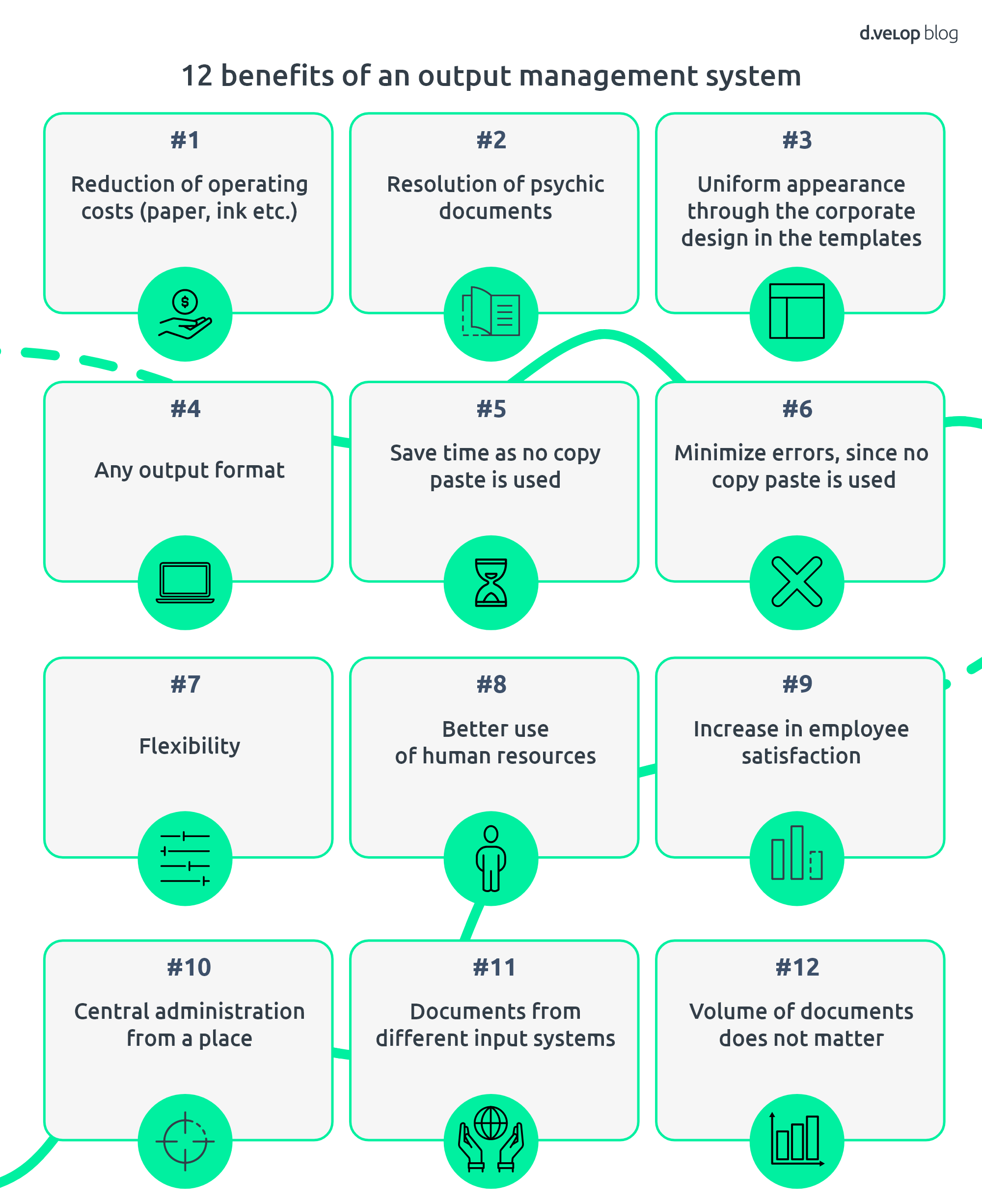Save money, personalised communication, increase productivity, minimise errors and much more… All this is possible with an output management system.
The following article explains in detail what advantages this management discipline brings, which tasks lie behind it and why this is indispensable for any company.
Definition output management
Output management systems generate documents automatically. This also includes the creation and control of electronic or physical documents, to all intended recipients within the company or externally. The uniform appearance provided by templates in adhering to the corporate design, plays a significant part in the process.
Tasks & goals of an output management system
The task of output management is to receive and manage documents from various input systems or sources. The volume of the documents is irrelevant, so it is unimportant how many pages a document has and how much data memory the document requires. The documents that are merged, need templates so that structures are clearly defined. Recurring elements such as logos or page numbers, do not have to be inserted each time. These elements are defined by rules in the templates. Templates contain the most important layout and design elements, saving redesign requirements. Furthermore, they ensure that corporate design and branding rules are maintained at all times for all internal and external publications.
Output management also exists in the printing area, controlling production planning and also the use of different printing systems. Let’s take a print shop as an example: it is usually equipped with different printing systems and often more than one machine is used for an order. Output management is used to ensure that planning and control proceed more quickly. This not only makes the implementation of the print jobs faster, but also more structured. In the printing area, it is usually not design elements that are predefined in the templates but various printing parameters that the technologist in the printing shop requires. An output management system can also bundle different print jobs. For example, if two different orders come in, that will use the same type of paper, the output management recognises this and indicates that these jobs can go to the printer together. This enables greater efficiency, reduces operational costs and minimises manual intervention.
Output management is a critical discipline that aims to unite processes and requirements in different areas of a company, ensuring quality, reliability and adherence to uniform corporate image, via clearly defined documentation processes.
Challenges & hurdles behind an output management system
Challenges can quickly arise when you have to repeatedly make decisions about template designs as to which documents are to be created with which templates. You therefore always need a design that retains the corporate design rules of the company. Since the documents and the design are created using templates, it is important to ensure that the implementation of the design corresponds to the ideas of the designer.
A template design with templates that everyone knows would be ideal. Therein lies the challenge: to create a template design that anyone can use without having strong prior knowledge. Another challenge is the integration of different data points, such as ERP systems, ECM systems, SQL databases or Office documents.
Say NO to copy-and-paste and YES to output management systems!
Many people are used to using “copy and paste”. However, this methodology is highly error-prone. If you copy blindly and do not check carefully, you may accidentally send data to the wrong recipient – a nightmare for data protection!
Privacy is important and personal information must be treated with care. Therefore, output management becomes a safe and highly effective alternative. Unfortunately, manual processing can be error-prone, such as this example from the world. It was reported that the mini-job center of the “Deutsche Rentenversicherung Bahn-See” in Essen (Germany), had demanded 4,632,124,357,000,001 Euros from a lady. Why? Because an employee accidentally copied the customer number instead of the amount to be paid. Utilising an automated output management solution would have avoided this error. As only data sources have to be selected and predefined templates ensure data is placed in the correct fields.
Automatically generate documents and integrate data
Output management with dox42 in d.velop documents
How does an output management system benefit my company?
In order to document production and shipping, companies are increasingly concentrating on optimising their processes, raising efficiency potential and importantly, reducing costs. Communication can also be personalised. This increases the response rate in customer relations. And also, the image that the company pursues is reflected in the documents given to the outside world. The corporate design can be used in a targeted manner via the document design, automatically adhering to rules and creating a professional appearance both externally and internally. Output management is an invaluable business support system. It also offers even more advantages, which are summarised in the infographic.
Conclusion
Output management is a sustainable investment for a company. It offers many notable advantages that are relevant for both employers: inside and employees: inside. Above all, it is faster than manual document design and creation, thus minimising errors and saving enormous amounts of time and paper waste. There is even a special SAP Output Management for SAP users.

